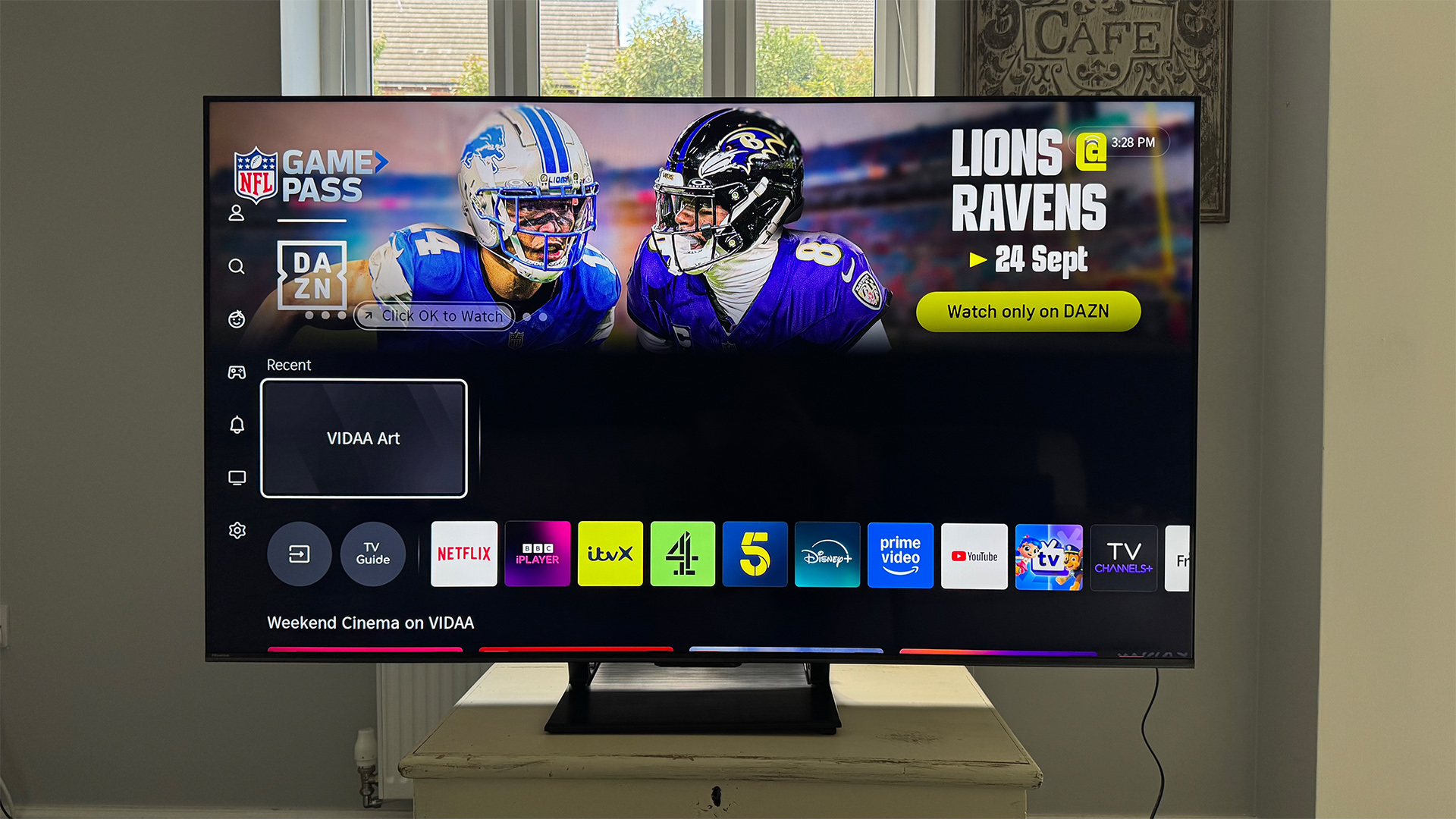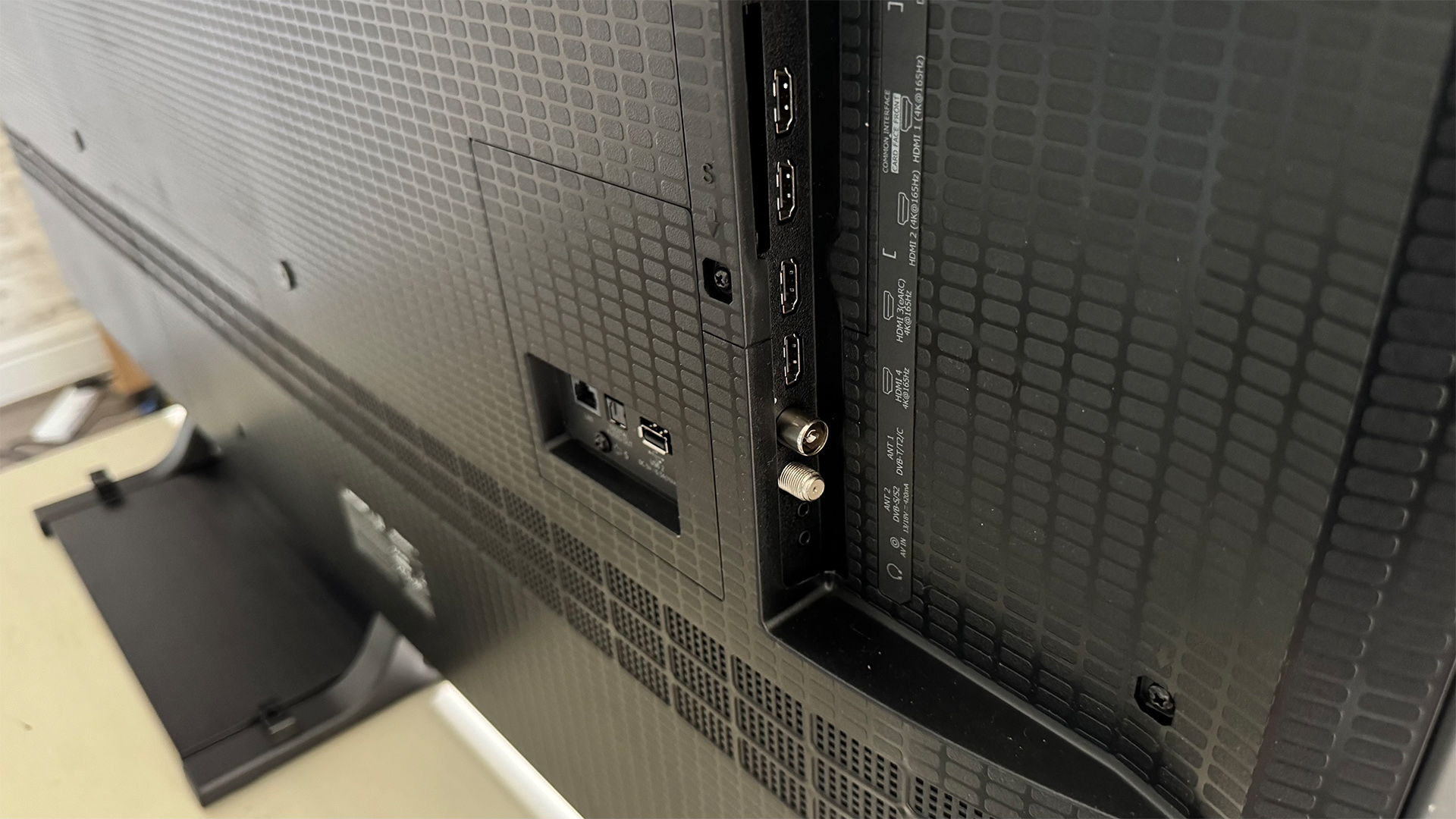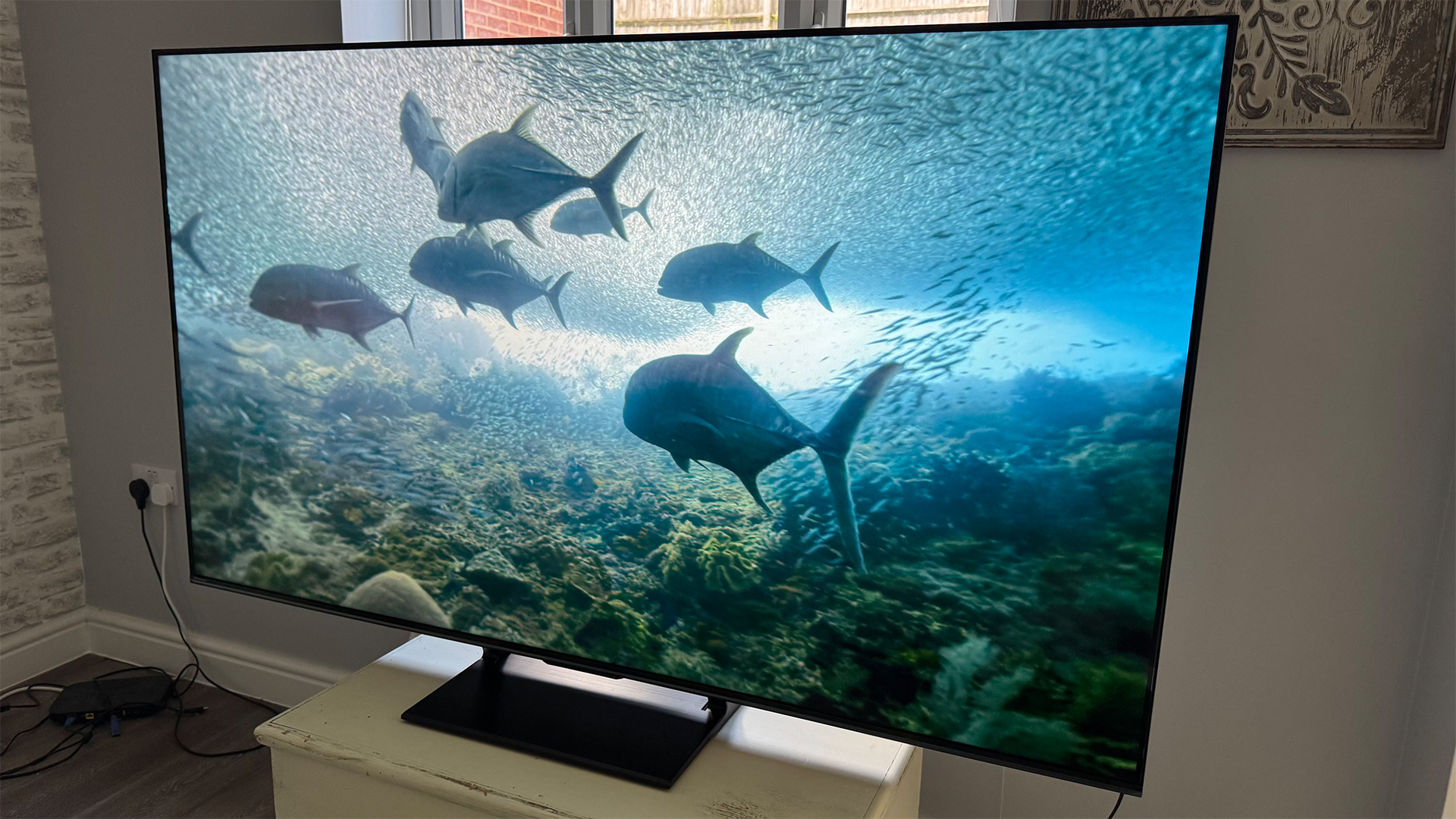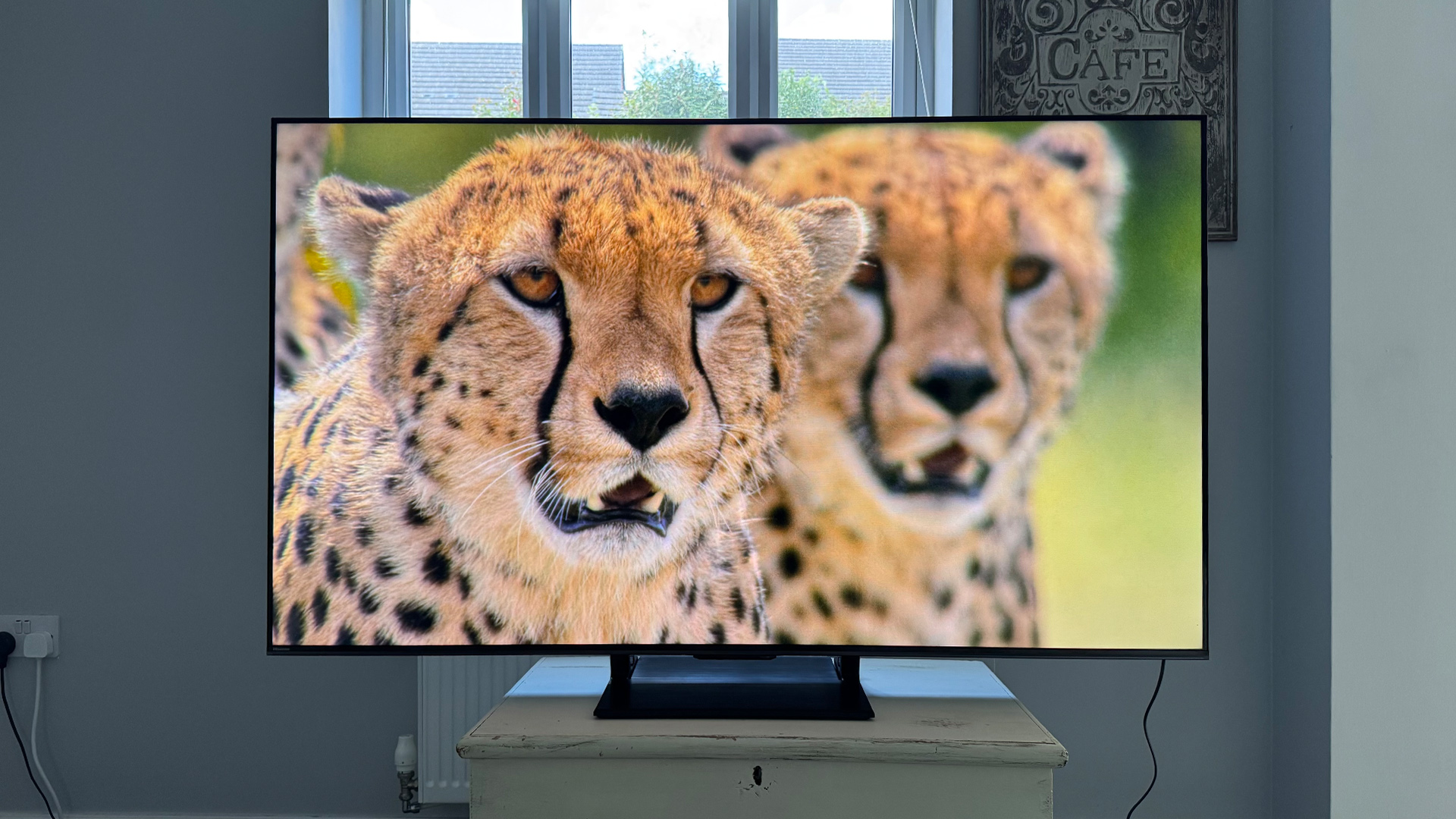What Hi-Fi? Verdict
The Hisense U7Q Pro is dazzlingly good at times – but can’t always keep it all together
Pros
- +
Impressive black levels
- +
Good sound quality
- +
HDR10+ and Dolby Vision support
Cons
- -
Pictures can be inconsistent
- -
Occasional local dimming issues
- -
Colour desaturation in dark scenes
Why you can trust What Hi-Fi?
Hisense has been on particularly bullish form this year.
In 2025, the Chinese powerhouse has delivered the world’s first Mini RGB screen, ever better value king-sized LED TVs, a cracking collection of new lifestyle projectors, and – based on our recent time with its 65U8QTUK – substantial improvements to the upper echelons of its core LCD TV range.
We’re hoping that those substantial improvements are also present in the 65-inch U7Q Pro we’re looking at here.
Price

While the recently reviewed U8Q seemed slightly expensive by the standards of some of 2025’s seriously tough competition, the current £899 price of the 65U7QTUK Pro (to give it its full name) feels like much better potential value.
A basically identical version of the U7QTUK Pro exists in Australia, under the name U7QTAU. Note that, unlike the UK, Hisense Australia doesn’t carry separate Pro and non-Pro versions of the U7QT series. No reliably direct equivalent of the U7QTUK Pro exists in the US.
There are some notable spec differences between the UK’s £899 U7QTUK Pro and £699 standard (as in, non-Pro) U7QTUK models.
In particular, the non-Pro version has significantly fewer dimming zones, features a less powerful sound system, only supports gaming up to 144Hz versus the Pro version’s 165Hz, and doesn’t boast the more expensive model’s anti-reflection screen.
The latest hi-fi, home cinema and tech news, reviews, buying advice and deals, direct to your inbox.
Design


Screen size 65 inches (also available in 55, 75, 85, and 100 inches)
Type Quantum Dot LCD
Backlight Mini LED (560 dimming zones)
Resolution 4K
HDR formats HLG, HDR10, HDR10+, Dolby Vision
Operating system VIDAA
HDMI inputs x 4 (all 48Gbps HDMI 2.1)
Gaming features 4K/165Hz, 4K/120Hz, VRR, ALLM, Dolby Vision game mode
Input lag 13.2ms at 60Hz
ARC/eARC eARC
Optical output? Yes
Dimensions (hwd, without stand) 84 x 145 x 7.5cm
The U7QTUK Pro has a distinctive and attractive, if slightly chunky, design.
From the front, the chunkiness isn’t readily apparent; the TV sits on a centrally mounted stand with a strikingly open neck that actually makes the screen look quite lightweight and ‘floaty’, while the bezel around the screen restricts itself to a pleasingly narrow but premium-looking glossy grey trim.
From the side, though, you certainly notice how the back panel sticks out 7.5cm at its deepest point. That’s quite a distance by today’s premium TV standards, and doesn’t make for the most elegant wall-mounting option.
The U7Q Pro’s depth will be pretty easy to forgive, however, if it turns out to be a result of Hisense using a really uncompromising backlighting system.
Joining the U7QTUK Pro in its box is a remote control that bangs the premium drum with a smart black metallic finish, an appealing silver metallic menu navigation ring, and even a large solar panel built into its front edge, which means you’ll never need to replace its batteries.
Features

The U7Q Pro has a lot to say for itself for a 65-inch TV that costs well under £1000.
Firstly, it uses a contrast-friendly VA panel rather than one of the IPS panels that have crept into some premium Hisense TVs in recent years.
It illuminates this panel with Mini LEDs rather than regular-sized LEDs, too, for extra light control and, potentially, brightness. And the output of those Mini LEDs is controlled by a strikingly numerous 560 separate local dimming zones.
The non-Pro model only gets 220 dimming zones by comparison – a substantial enough difference that alone could justify the additional cost.
Hisense claims that the U7QT Pro’s screen boasts an anti-reflective finish, though while this does seem to reduce general light spread across the screen in bright rooms, it doesn’t reject specific intense reflections nearly as comprehensively as the filters on Samsung’s premium OLED and LCD TVs. Or Hisense’s own Canvas TV range, come to that.
The LED panel uses Quantum Dots to produce its colours, while its native 120Hz refresh rate gives it significant gaming appeal. In fact, its gaming refresh rate support extends to 165Hz, though that will be of no benefit to those who game on consoles, as they are still limited to 4K/120Hz.
Further gaming attractions include VRR support (including AMD FreeSync) across the whole refresh rate range, and a dedicated Game Bar menu that provides detailed signal information and access to features such as genre-based picture presets, aspect ratio adjustments, a super-imposed Aim Point, and mini-map magnification.
The TV’s input lag at 60Hz is 13.2ms – a very good if not quite class-leading result.
All four of the U7Q Pro’s HDMI connections support the full range of gaming features, which is always good to find at a time when some of the biggest and best TV brands out there still limit you to two full-bore gaming HDMIs.

Other connections include one USB 3.0 port, one USB 2.0 port, an optical digital audio output, the inevitable RF tuner, a physical headphone jack, a left/right phono input, an Ethernet port, plus, of course, both wi-fi and Bluetooth support for wireless streaming and content sharing.
Driving all the U7Q Pro’s picture hardware and features is Hisense’s latest Hi-View AI Engine Pro chipset. The AI-bolstered enhancements provided by this processor include an AI Sports mode to reduce motion blur and create a stadium-like look to images, a genre-recognition system that can adjust the pictures to best suit the type of content they contain, AI-boosted upscaling of HD and SD sources, and even a system for upconverting SDR to HDR.
Talking of HDR, the U7Q Pro continues Hisense’s welcome policy of supporting all of the main HDR formats: HDR10, HDR10+, HLG, and Dolby Vision. The screen also boasts IMAX Enhanced certification, meaning it has been judged capable of doing justice to the ultra-clean IMAX Enhanced masters available on Disney+ and a few 4K Blu-rays.
The promising array of picture specifications and features is joined by a 50W 2.1.2-channel sound system designed to deliver the height as well as width and bass effects of Dolby Atmos mixes. There’s support, too, for Hisense’s Hi-Concerto feature, where the TV’s sound system can work in tandem with Hisense soundbars.
Smart features, finally, are delivered by Hisense’s in-house VIDAA system. This carries all the streaming apps most households will need, and is pretty straightforward to use – either via the remote or voice control.
The TV also carries the Freely service, which lets you live-stream any BBC, ITV, Channel 4 or Channel 5-affiliated channel (plus a few more besides) found on the Freeview digital broadcast platform, rather than having to watch them through an aerial. Freely also includes tens of thousands of hours of on-demand content.
Picture

For its price, the U7Q Pro’s pictures are excellent in some ways and with some content, but can’t quite deliver the sort of consistency needed to make it an unqualified winner.
Its handling of dark HDR scenes provides a particularly good example of what we’re talking about.
With some very dark shots, the backlight performance is outstanding, delivering some of the deepest, richest blacks we’ve seen from any LCD TV, never mind a 65-inch one with this price tag.
In its Standard picture preset, it also manages to show more subtle shading detail in the darkest picture areas than the TCL C7K with which we compare it.
However, despite its high dimming zone count, the 65-inch U7QT Pro’s excellent black levels can at times be interrupted by more backlight blooming than the TCL exhibits. Also, with mid-dark scenes that contain a lot of subtle background details, the U7QT Pro’s black levels can suddenly start to look quite grey and misty in Standard mode compared with the TCL – despite the fact that Hisense’s set doesn’t achieve the same brightness peaks and colour intensity that the TCL delivers.
Not being able to control its zonal light output quite as intelligently as the screen’s core capabilities deserve can also mean that sometimes Hisense’s Standard mode can reveal slightly more detail in dark areas than it should – and sometimes this over-exposed picture information can contain a fair bit of noise.
Switch to Filmmaker Mode and the character of the U7QTUK Pro’s dark scene presentation changes, but still generates a mix of greatness and inconsistency.
The very darkest scenes again enjoy clearly deeper, less grey-tinged black tones than the TCL can provide. The backlight blooming issues that affect the Hisense’s Standard preset are pretty much absent in Filmmaker Mode, too.

However, the slight excess of shadow detail apparent in Standard mode suddenly switches to a noticeable lack of subtle shadow detail. You can improve this with a dedicated Dark Detail feature, but this doesn’t completely resolve the issue.
It’s also noticeable in Filmmaker Mode that while the U7Q Pro delivers deeper black levels than the TCL, bright parts of mostly dark pictures look substantially less dynamic and vibrant on Hisense’s model, making the HDR experience feel relatively limited.
The U7Q Pro’s colour performance is similarly inconsistent. In bright HDR scenes, while Hisense’s TV doesn’t get as bright as the rival TCL C7K in Standard mode, it actually delivers a more balanced and nuanced colour performance that helps such images look more three-dimensional and natural. Some shades, particularly greens, look slightly more natural than they do on the TCL, too.
With relatively dark scenes, though, the U7QT Pro’s colours can wash out quite dramatically, leaving, for instance, the blue and cream floor tiles of Sapper Morton’s home in Blade Runner 2049 looking a monotone grey. This issue becomes more pronounced in the Hisense’s Filmmaker Mode, too.
Hisense’s set avoids adding faint magenta or blue undertones to blacks, which is a peculiar, mild flaw of the TCL – but it also suffers with some occasionally quite pronounced backlight ‘jumps’ not apparent on the TCL when showing relatively dark scenes, such as the scene in Blade Runner 2049 where Agent K flies his spinner over LA towards the police headquarters.
The U7Q Pro tends to suffer slightly less with detail ‘clipping’ in the brightest HDR picture areas than the TCL, though, and its pictures also tend to look slightly sharper and crisper, especially with native 4K content.
The Hisense set’s Film motion preset yields slightly crisper but still cinematic motion handling with 24p sources than any motion setting on the TCL does, too.
The more content we feed the Hisense, the more we start to detect a theme: it looks its best – and sometimes, at least, better than the TCL – with relatively mild HDR content, but it tends to reveal some inconsistencies with relatively potent HDR masters.
At this point, it’s important to stress that all of our main comparisons of the U7QT Pro’s pictures are being made against an Award-winning TCL TV. So the fact that Hisense’s set, in some ways and at some times, outperforms that TV means it’s actually a really strong performer in the context of the TV world at large, revealing substantial progress by Hisense’s TV division that bodes well for the future.
It’s just that consistency matters above all else to a truly immersive TV experience, and on that front, the 65U7QTUK Pro comes up just a little short.
Sound

As with its pictures, the U7QTUK Pro’s sound is often excellent. We’re immediately struck by the scale and volume of the soundstage its 2.1.2 sound system creates as it busily and boldly casts its sound well clear of the TV’s physical bodywork.
There’s a palpable sense of height to this soundstage when playing Dolby Atmos soundtracks, too, thanks to the included up-firing speakers.
Transitions across this wall of sound are delivered with conviction, and Hisense has managed to craft a convincing soundstage ‘structure’, complete with both vertical layering and a sense of score work and other extradiegetic sounds correctly existing beyond the left and right boundaries of a mix’s diegetic elements.
The speakers have the power and headroom to handle even the densest action or horror movie soundtrack moments, never falling away or collapsing in on themselves as so many TV sound systems can under pressure. Such dense moments don’t sound thin or harsh, either, thanks to the presence of pretty strong amounts of bass from the TV’s built-in subwoofer.
This subwoofer can, though, succumb to crackling distortions when pushed really hard by Hollywood’s most extreme low-frequency impulses, especially if a heavy bass sound is either very sustained or drops very suddenly.
There can also be a slight loss of impact from hard sounds such as punches or gunfire when the rest of a mix is particularly dense.
Finally, dialogue, while clear and well-rounded, can sound a bit locked at the centre of the screen, rather than seeming to come from the location of different speakers’ mouths across the screen.
In the end, though, the positives of the U7QT Pro’s sound comfortably outweigh its limitations.
Verdict

The 65-inch U7QTUK Pro delivers a big improvement over its Hisense predecessors, to the extent that at times it seriously delivers some of the best picture quality the LCD world has to offer.
It just isn’t quite consistent enough in the end, though, to create the sort of ‘settled’ feeling that leads to a truly immersive experience.
SCORES
- Picture 4
- Sound 4
- Features 4
MORE:
Read our review of the Hisense 65U8QTUK
Also consider the TCL 65C7K
Best TVs: flagship OLEDs and budget LED sets tried and tested
John Archer has written about TVs, projectors and other AV gear for, terrifyingly, nearly 30 years. Having started out with a brief but fun stint at Amiga Action magazine and then another brief, rather less fun stint working for Hansard in the Houses Of Parliament, he finally got into writing about AV kit properly at What Video and Home Cinema Choice magazines, eventually becoming Deputy Editor at the latter, before going freelance. As a freelancer John has covered AV technology for just about every tech magazine and website going, including Forbes, T3, TechRadar and Trusted Reviews. When not testing AV gear, John can usually be found gaming far more than is healthy for a middle-aged man, or at the gym trying and failing to make up for the amount of time he spends staring at screens.
You must confirm your public display name before commenting
Please logout and then login again, you will then be prompted to enter your display name.
